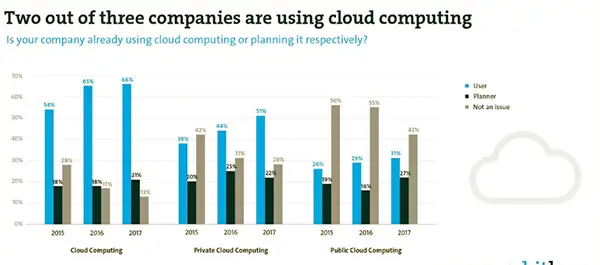
As the digital landscape continues evolving, cloud computing has emerged as a grave driver of business innovation, offering unparalleled scalability, cost-efficiency, and enhanced accessibility. However, transitioning to the cloud is a complex task. The process, often termed ‘cloud migration,’ involves transferring an organization’s digital assets, services, and applications from on-premises or legacy infrastructure to it.
This transition, while advantageous, is fraught with complexities and challenges that can impede an organization’s operational efficiency if not managed correctly. A well-planned and strategic approach, coupled with the right tools, can significantly smooth the journey, enabling enterprises to harness their power entirely.
This article guides navigating these shifts, exploring key considerations, and providing insights into how enterprises can make their journey to it as seamless as possible.
The emergence of the internet was just the beginning of a technological revolution that has reshaped how businesses operate, paving the way for the dawn of the cloud era. The phrase ‘cloud computing’ is more than just a trendy catchphrase in the corporate world, and rightly so. As an internet-based computing model, it provides on-demand IT resources, applications, and data storage delivery through a cloud services platform.
Its roots can be traced back to the 1960s, with the concept of an “intergalactic computer network” introduced by J.C.R. Licklider. Nonetheless, in the 21st century, with the launch of Amazon’s Elastic Compute Cloud in 2006, it began to take shape.
It fundamentally changes how businesses operate by offering key features such as scalability, cost-effectiveness, accessibility, and flexibility. It allows organizations to scale their IT infrastructure according to their needs, reducing the need for costly on-premises hardware. Its pay-as-you-go model offers cost-effectiveness by shifting IT expenditure from capital to operating expense. It also provides ubiquitous access to applications and information, enabling remote work and flexibility.
Moreover, the cloud has a significant role in the digital transformation of enterprises. Digital transformation infuses all facets of a business with digital technology, fundamentally reshaping the way it functions and enhancing value delivery to its customers. Its ability to facilitate rapid innovation, streamline operations, and improve customer experiences has made it an integral part of this transformation process.
Despite these advantages, progressing to the cloud is challenging. Organizations often face issues related to data security, compliance, operational downtime, and technical complexities during the migration process. Therefore, enterprises must understand these challenges and equip themselves with the right strategies and tools to navigate this move smoothly.
As businesses continue to evolve in an increasingly digital world, their necessity has become more prominent. The reasons for this shift are varied and multifaceted, reflecting the dynamic nature of modern enterprise needs.
A well-executed enterprise data migration to the cloud can transform businesses, providing them with the tools to navigate the digital era. However, a successful alteration requires understanding and mitigating potential challenges.
Embarking on this journey may be fraught with several challenges, each of which can profoundly impact the transition’s success. Here is a deeper look into these challenges:
Although these challenges seem overwhelming, they can be effectively managed with careful planning, strategic decision-making, and appropriate data management software. Understanding these challenges is the first step toward ensuring a smooth and successful enterprise data migration to the cloud.
A smooth cloud transition requires strategic planning and careful consideration of several factors.
By considering these key factors, enterprises can ensure a smoother progress to the cloud, effectively harnessing its benefits while mitigating potential risks and disruptions.
As we venture further into the digital era, cloud transitions will continue to be a pivotal part of enterprise strategies. The incorporation of sophisticated technologies such as Machine Learning (ML), Artificial Intelligence (AI), and automation is set to refine and boost the efficiency of these shifts further.
AI and ML can automate and optimize its various aspects, from managing data to identifying potential security risks. As these evolve, they will offer more industry-specific solutions, making them even more appealing to enterprises. Thus, businesses that adapt and refine their cloud transition strategies will be well-positioned to thrive in the expanding digital and interconnected future.

The journey to the cloud is not a mere trend but a necessary evolution in a rapidly digitalizing business environment. Its advantages – scalability, cost-efficiency, improved accessibility, and innovation – far outweigh the challenges. Yet, these challenges, from data security to technical complexities, cannot be overlooked. With proper planning, modern data management software, and a phased approach to enterprise information migration, businesses can successfully navigate the intricate process of cloud transition.
The cloud landscape will evolve as we move forward, bringing new tools, technologies, and opportunities. Enterprises willing to adapt and seize these opportunities will stay ahead in the competitive market. As we navigate the dawn of this cloud era, the mantra for success remains the same – adapt, evolve, and innovate.
